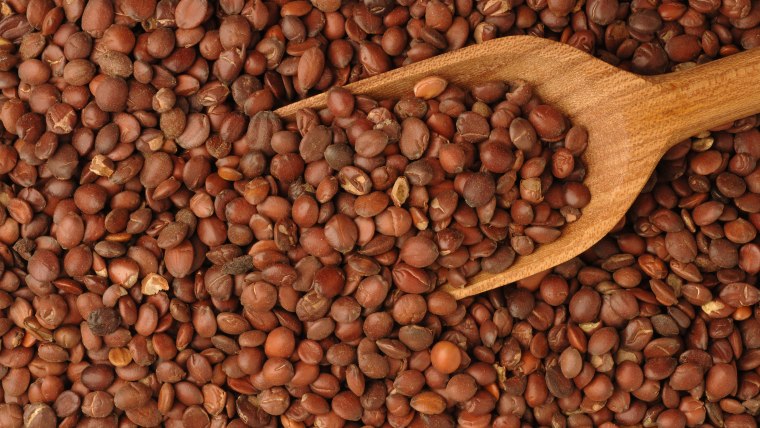The people who ate the original Paleo diet feasted on acorns and white clover, fennel and roasted grass seeds, Israeli researchers report.
An unusual new study found a treasure trove of preserved food remains from 780,000 years ago at a site in modern-day Israel, and painstaking analysis shows the people who lived there ate a wide variety of nuts, roots, seeds, grains and tender green shoots, as well as berries, olives and herbs.

Naama Goren-Inbar of the Institute of Archeology at the Hebrew University of Jerusalem and colleagues have been excavating the site, on what used to be a lake, for years. They have found the early humans who lived there used fire, carved wood and made stone tools.
They hunted and cooked and while no remains of the people themselves have been found, researchers believe they are likely to have been Homo erectus, a species of early human that lived as recently as 70,000 years ago and moved out of Africa to populate the world.
Some of the food remains would have been familiar to modern people — grapes, raspberries, olives and water chestnuts, Goren-Inbar said. Others, not so much — Johnson weed, reeds, purple loosestrife and water whorlgrass. But it was all edible.
“Every single species that we have mentioned, there is literature describing it as edible,” Goren-Inbar told NBC News.
“There is a big selection —you have seeds, you have fruit, you have nuts, you have underground storage organs and you have vegetables,” she added.
To add spice and flavor there were mint and fennel, an apple-flavored fruit called a jujube, figs and pears.
Other excavations have found the people who lived on what used to be a lake alongside the Jordan River ate just about anything they could. Elephants were a favorite.
Related: The real Paleo diet may have included bread
“The food plant remains were part of a much more diverse diet that probably included additional food plant species, fish, amphibians, reptiles, birds, mammals, such as fallow deer, elephants, and various aquatic and terrestrial invertebrates,” the team wrote in their report, published in the Proceedings of the National Academy of Sciences.
But it’s almost impossible to find the remains of plants that old.
At one part of the site, which was occupied for at least a million years, the lake flooded and kept layers wet for millennia. “The deposits which house the site are waterlogged. And because they are waterlogged, it conserves organic material,” Goren-Inbar said.
Her team found 10,000 little pieces, including seeds and bits of nuts.
Related: How to Eat Like a Native American
Fresh young shoots would have been eaten raw, but much of what the people who lived there ate would have been cooked, Goren-Inbar said.
“They definitely had to,” she said. “Some of the material needs to be cooked or needs to be roasted in fire in order to get rid of the toxins, like acorns or like some of the water plants, some of the bark, some of the underground storage organs.”
The team has found no evidence the seeds were ground or made into dough. Some of the plants were also likely used as medicine. Willow bark is the source of modern-day aspirin, for example, while the purple loosestrife can be used to treat diarrhea and dysentery.
What’s as interesting as the food is what it tells archeologists about the people, Goren-Inbar said.
They had an African-style culture – —known as the Acheulian -- — and made tools like other hominids did in Africa. But they lived in a Mediterranean climate, with four distinct seasons and new species of plants to eat.
So it was not only the original “paleo” diet, but the original Mediterranean diet, also, Goren-Inbar said.